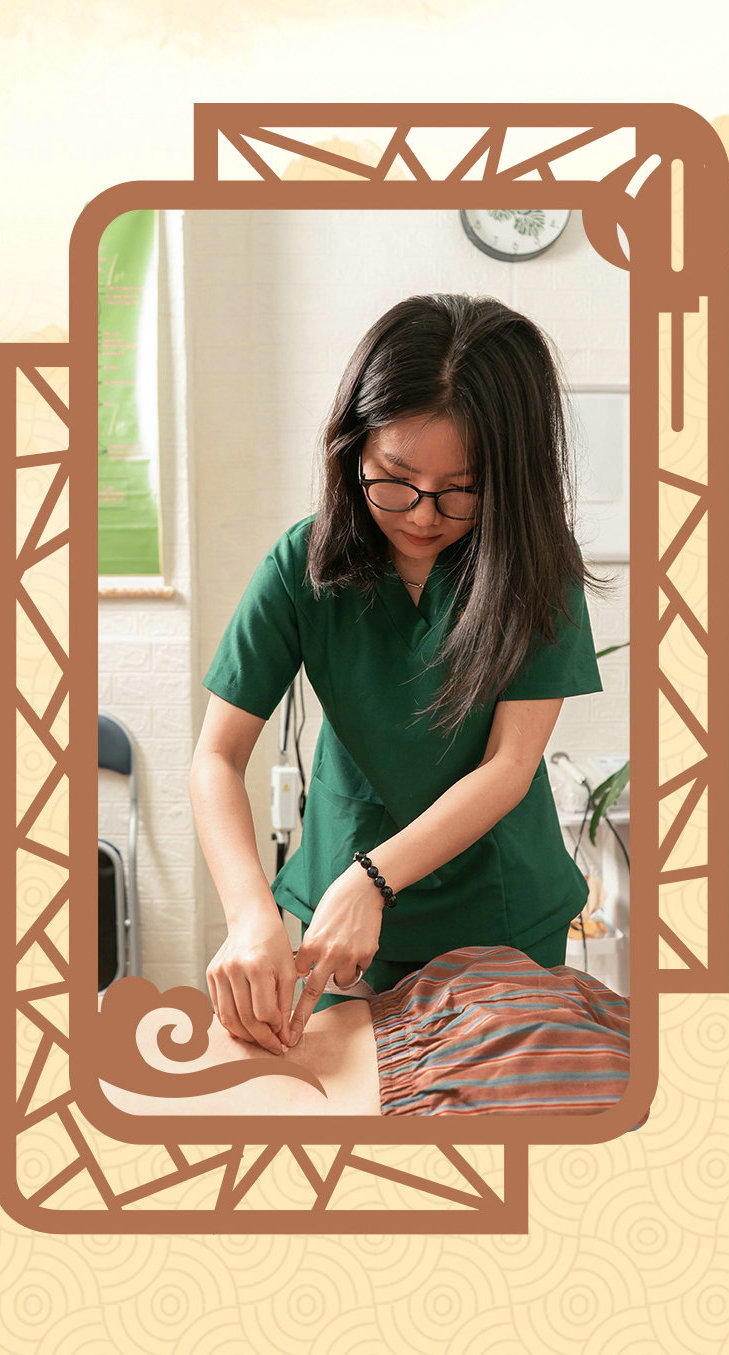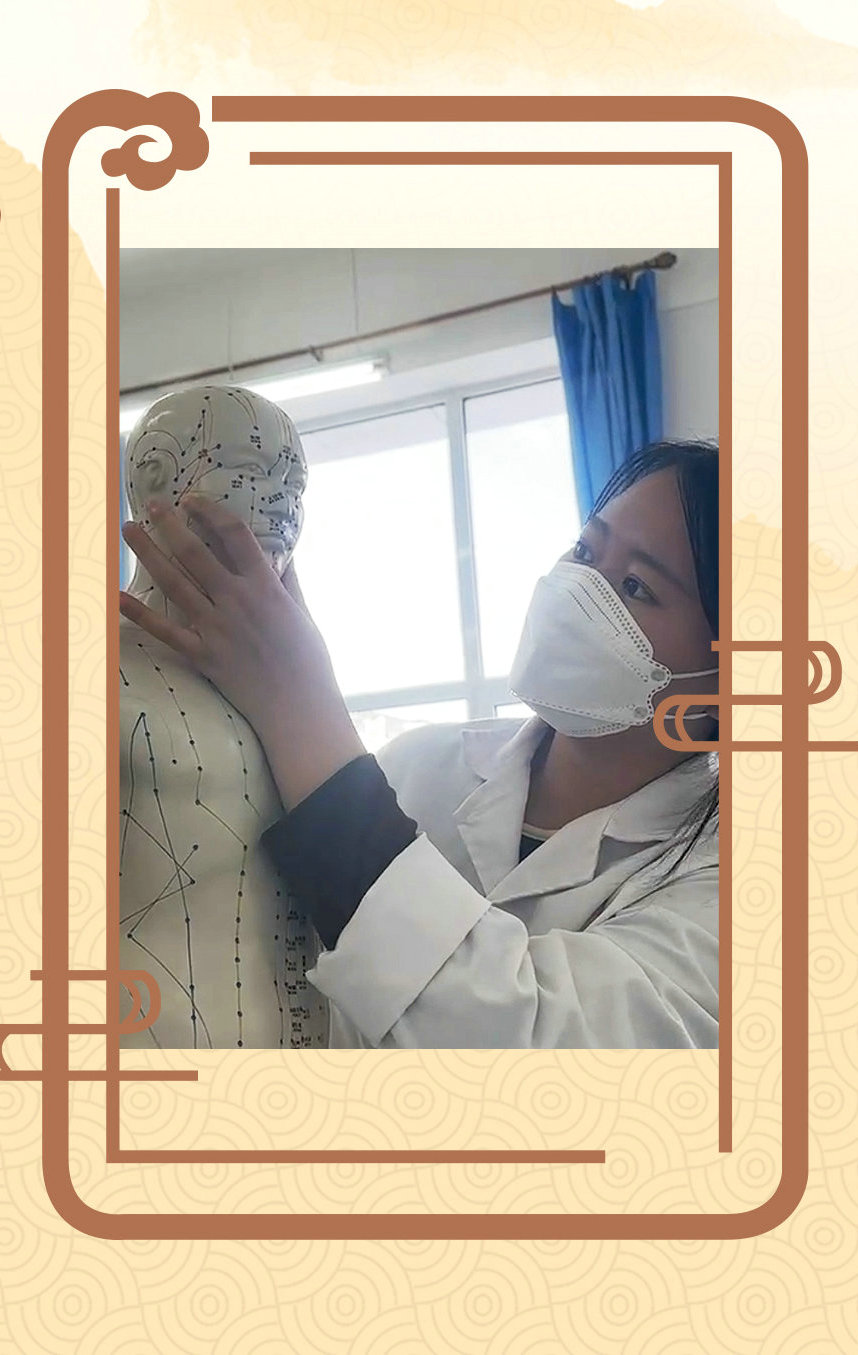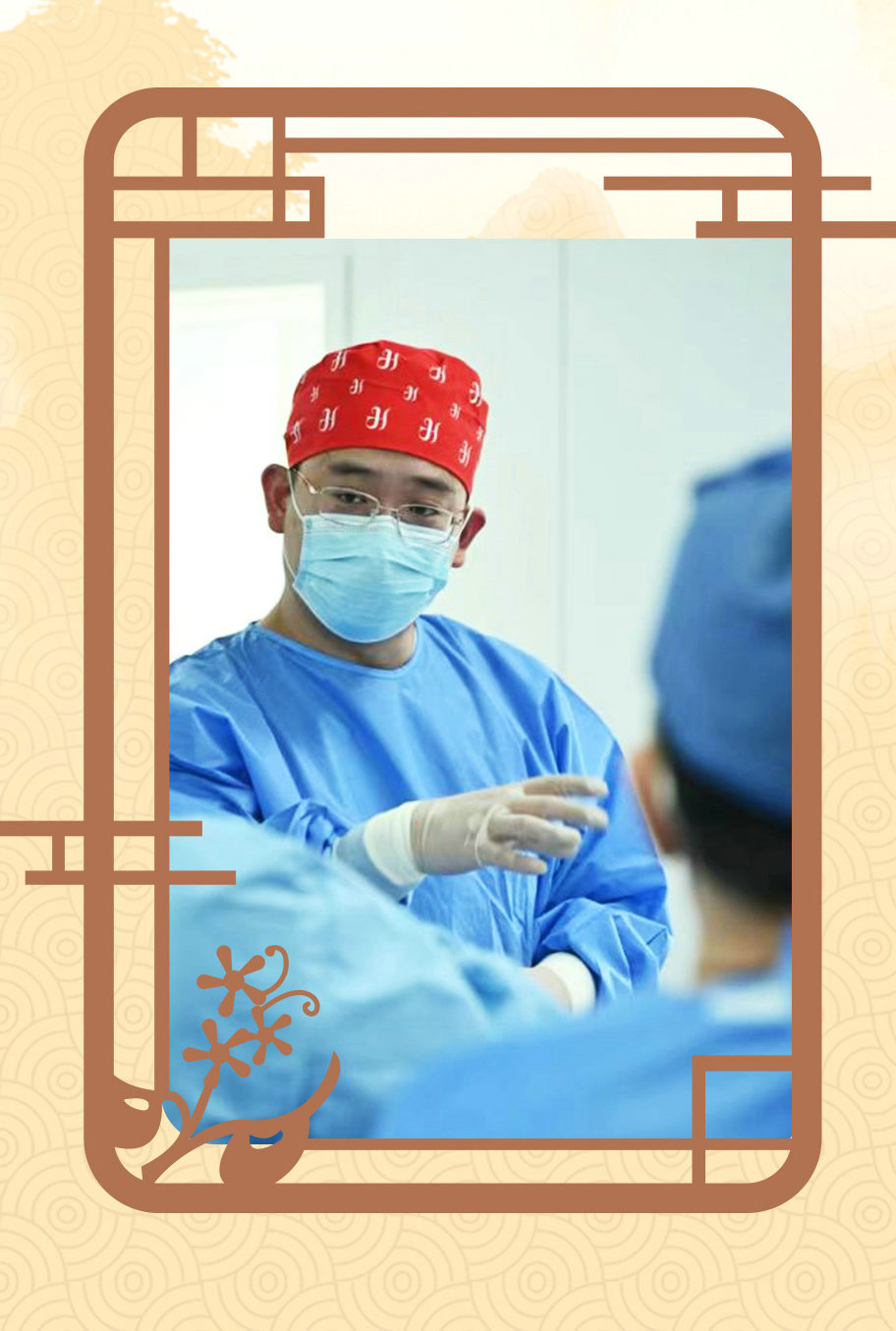Global rise of TCM
From:China DailyAuthor: 2024-01-17 13:49

Phan Thi Kim Chi from Vietnam applied acupuncture to a patient.[Photo provided to China Daily]
Phan Thi Kim Chi's connection with Traditional Chinese Medicine began at an early age. Growing up in a small village in Hanoi, Vietnam, it was inconvenient for Phan to travel to hospitals in neighboring cities. Whenever she caught a cold or experienced a headache as a child, her family would seek the help of a local TCM practitioner, whose prescriptions often included many herbs that could be found in the nearby woods of the village.
"For me and the villagers, TCM is a convenient and effective choice," said the 27-year-old. "I thought maybe one day I could use it to help people, too."
This led her to major in TCM at a traditional medical school in Vietnam and later pursue further studies in acupuncture and tuina (Chinese therapeutic massage) at Changchun University of Chinese Medicine in Northeast China's Jilin province as a master's student.
According to Phan, even though TCM has long been commonly practiced and accepted in Vietnam as it shares similarities with Vietnam's own traditional medicine, finding a good doctor or school to learn TCM in Vietnam is not easy. This is why she aims to bring the knowledge she has gained in China back to her own country. "I plan to become a TCM doctor and teacher after graduation," Phan said.
Overseas students of TCM, like Phan, are not rare. According to a report co-published in April 2023 by Guangzhou University of Chinese Medicine and Social Sciences Academic Press (China), the total number of international students studying TCM in China was 8,187 in 2020, with the largest population of 6,441 coming from Asian countries, followed by 832 from Africa and 432 from Europe.

Khiev Ken from Cambodia learned about meridians and collaterals using a medical human model.[Photo provided to China Daily]
Khiev Ken, 21, from Cambodia, is one of them. Always fascinated by ancient Chinese culture and dreaming of studying in China one day, she started learning Chinese in the fourth grade of primary school. In 2020, her dream came true as she was enrolled at the same university in Jilin as Phan.
As a foreign student, Khiev finds the TCM basic theory course to be the most challenging one in the curriculum. "We need to memorize all the meridians and collaterals and more than 200 acupuncture points in the human body," she said. "Being extensive and profound, TCM is deeply connected with Chinese philosophy. It requires years of learning and practice to truly understand the concepts of yin and yang, harmony between human and nature, and the five elements of wood, fire, earth, metal, and water." Sometimes she even translates the vocabulary and scripts into Khmer so she can remember and comprehend them better.
However, Khiev finds the efficacy of TCM much more immediate and straightforward. After practicing acupuncture on small pillows and medical human models, she and her classmates applied the treatment to themselves and on each other. When she accidentally broke her leg months ago, her teacher used acupuncture as a conditioning therapy and helped her recover "sound and rapid".
"TCM has been winning hearts because of its efficacy," said Ma Huifang, a professor at Beijing University of Chinese Medicine. "Whether at home or abroad, it is the actual effect that can dispel doubts and concerns over TCM."
Ma has extensive experience teaching TCM to international students overseas. In 2007, for example, she taught at the Department of Medicine at the University of Florence in Italy. "All my students were experienced doctors, and they highly recognized TCM, especially its use in pain treatment and flatulence expulsion."
According to Ma, Beijing University of Chinese Medicine had projects that sent professors overseas to Nanyang Technological University in Singapore, the University of Florence, and other academic institutions to teach TCM. It has also established the International School on campus, providing short programs for overseas students, and opened courses of professional English in TCM for Chinese students.
Many other Chinese medicine universities have adopted similar strategic initiatives to promote the globalization of TCM, including those in Shanghai, Nanjing, and Guangzhou.
"The younger generation's interest in TCM is rising. When I'm on duty at the clinic, many young patients consult me not only about their health but also about the application of TCM majors," said Ma. "Many people of my generation signed up for universities following our parents' or teachers' orders, but students nowadays choose to study TCM mostly out of their own passion and curiosity."

Zou Haoyan from Singapore took a class in TCM orthopedics.[Photo provided to China Daily]
Although the years of study are long and demanding, the employment prospects for TCM students are promising upon graduation, according to Zou Haoyan, a Singaporean who is now in his second year of a doctorate in TCM orthopedics.
According to Zou, there are many TCM centers in Singapore. In 2018, he worked in one where treatments like bone setting, moxibustion, acupuncture, and guasha, or scraping therapy, are highly popular. Apart from medium-sized centers, TCM practitioners are also in demand by larger TCM hospitals, health clubs, tuina shops, or even foot massage parlors in Singapore, which have been booming in recent years. And for those with bigger ambitions, opening their own TCM stores overseas is also a common option. "I know many of my peers building a career in the US, Turkiye, Kazakhstan, the Middle East, and mostly Southeast Asia," he said.
The thriving situation of TCM is not limited to schools and clinics. It has also become a lifestyle choice for many young people.
A survey conducted by China Youth Daily with 1,000 respondents in China revealed that 93.3 percent of them have tried various TCM diagnostic and treatment methods. It has also shown that 63.1 percent of the surveyed youth do so because of the fast-paced life and the increased pressures stemming from work.
Judging from the results, 52.9 percent of them feel that TCM health preservation has improved their suboptimal health conditions.
Ma mentioned the internet slang term "fragile university students", referring to the current generation who suffer from numerous health issues and are so fragile that they seem to break at the slightest touch despite being young.
"The phenomenon of 'aging-related diseases in younger people' is now very common. Many young people in their 20s come to the clinic for neck and back pain, as well as dry eye syndrome," she said.
Ma has also observed the phenomenon of young people making TCM fashionable and life-oriented, and she takes it as a good sign of the innovative development of TCM.
Based on the theory of the homology of medicine and food in TCM, Chinese herbal milk tea and a Chinese pharmacy version of plum soup have become trendy on social media. They are not only selling well in shops but also gaining numerous clicks online.
"I've seen tags of Chinese herbal milk tea on Xiaohongshu, and I really wanted to try it. It's a creative idea to combine TCM with trendy food among the young generation," said Khiev.
Young people are also posting pictures of their bruised backs after scraping therapy and video clips of practicing baduanjin, or Eight Brocade Exercises, a traditional Chinese fitness exercise. Even Pamela Reif, a workout vlogger with more than 10 million followers on YouTube and 11 million on Bilibili, tried out the exercise.
Phan also practices baduanjin regularly. "I do the eight sequences every morning just after I wake up. Although it only takes 12 minutes, it helps me awaken and connect with my body better," she said.
"I find that, after the COVID-19 pandemic, there is a trend among young people to place more emphasis on health conditioning and preservation, with TCM playing a significant role," she added.
Ma agreed. "The essence of TCM is preventive medicine, in which health preservation is crucial. The current popular products and movements are the embodiment of this idea."
However, Ma also reminded that TCM emphasizes the importance of diagnosing and treating based on differentiating syndromes. "Each person has a different constitution, and each herb has its own unique properties of cold, heat, warmth, and mildness. Even when drinking herbal milk tea, it's best to make choices accordingly," she said.
"Some people criticize TCM because it can't be quantified and standardized. In fact, this is TCM's characteristic and advantage instead of its shortcoming, as it is a more accurate and tailored medical method for different patients," Ma explained, adding that the popularity of TCM, both among international students and on social media, underscores "the tremendous potential for TCM's future development and prosperity".
Han Junhong and Yang Liu contributed to this story.
Edit:董麗娜
The copyright of the article and the picture belongs to the original author. If there is any infringement, please contact to delete it